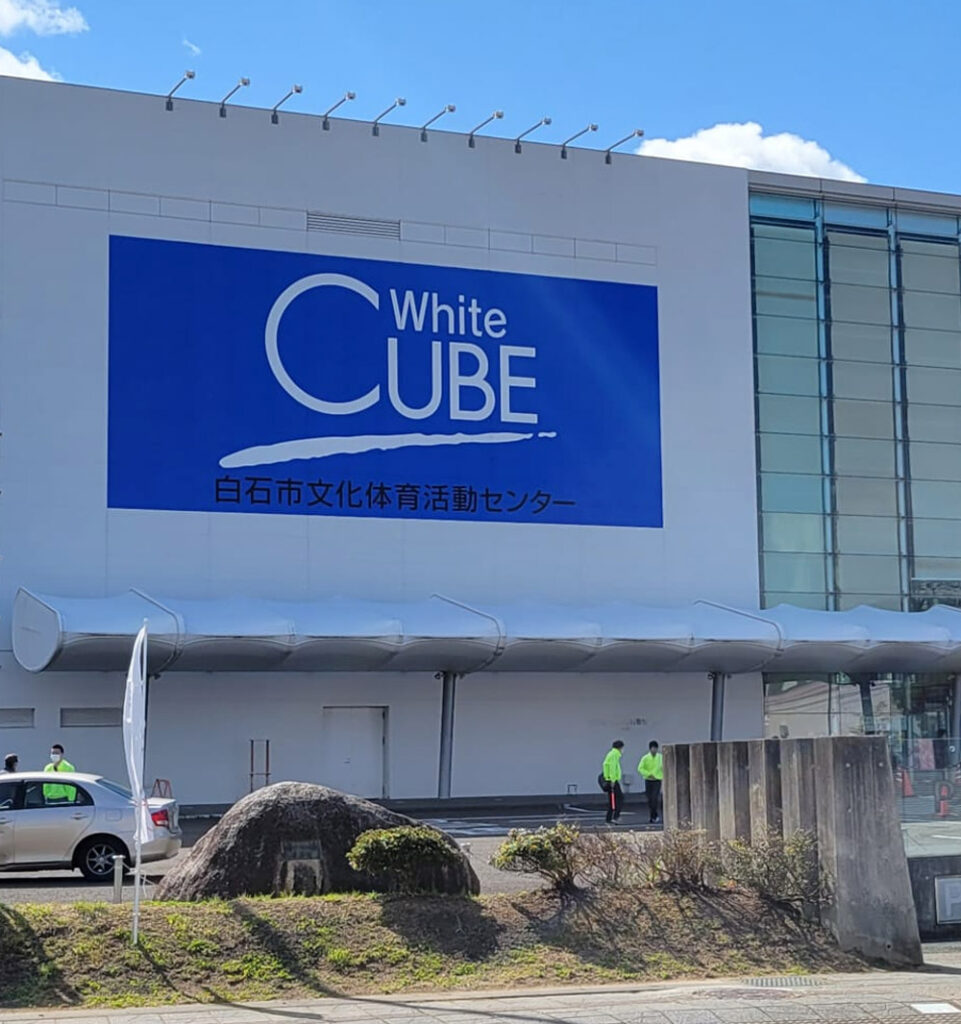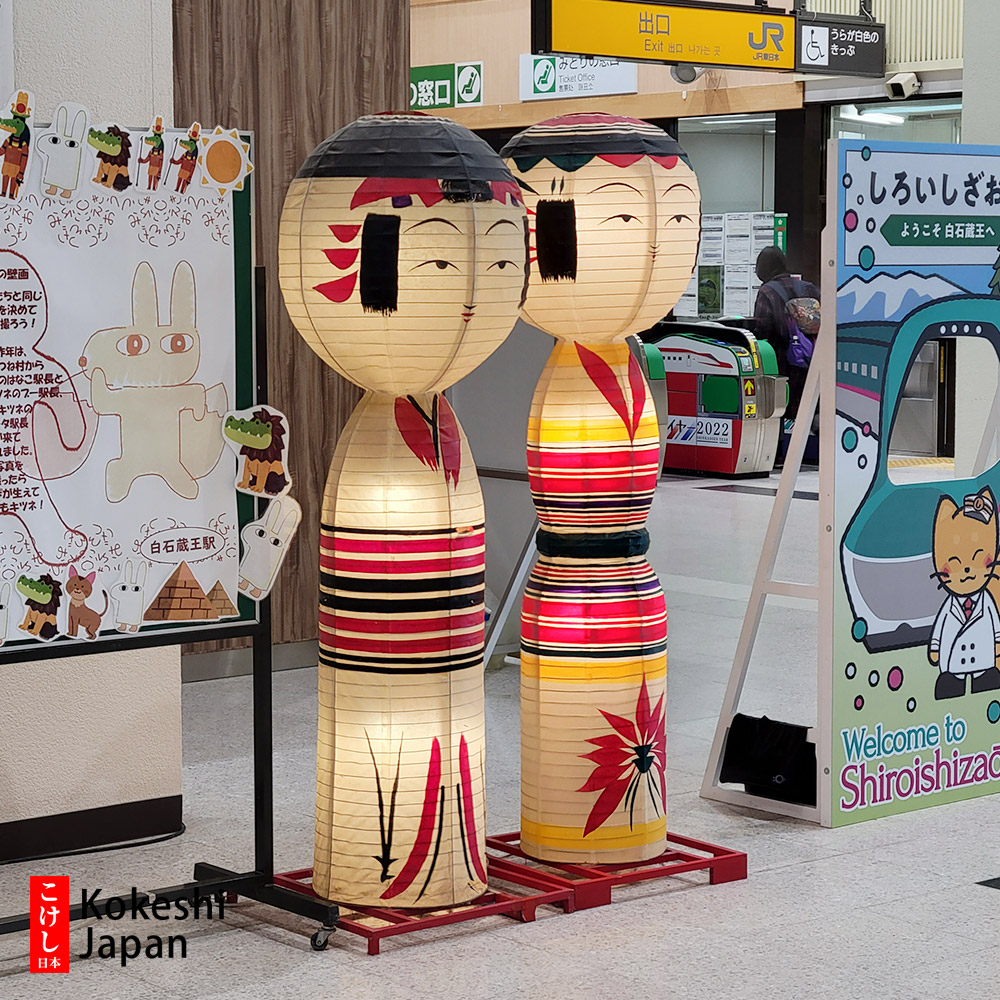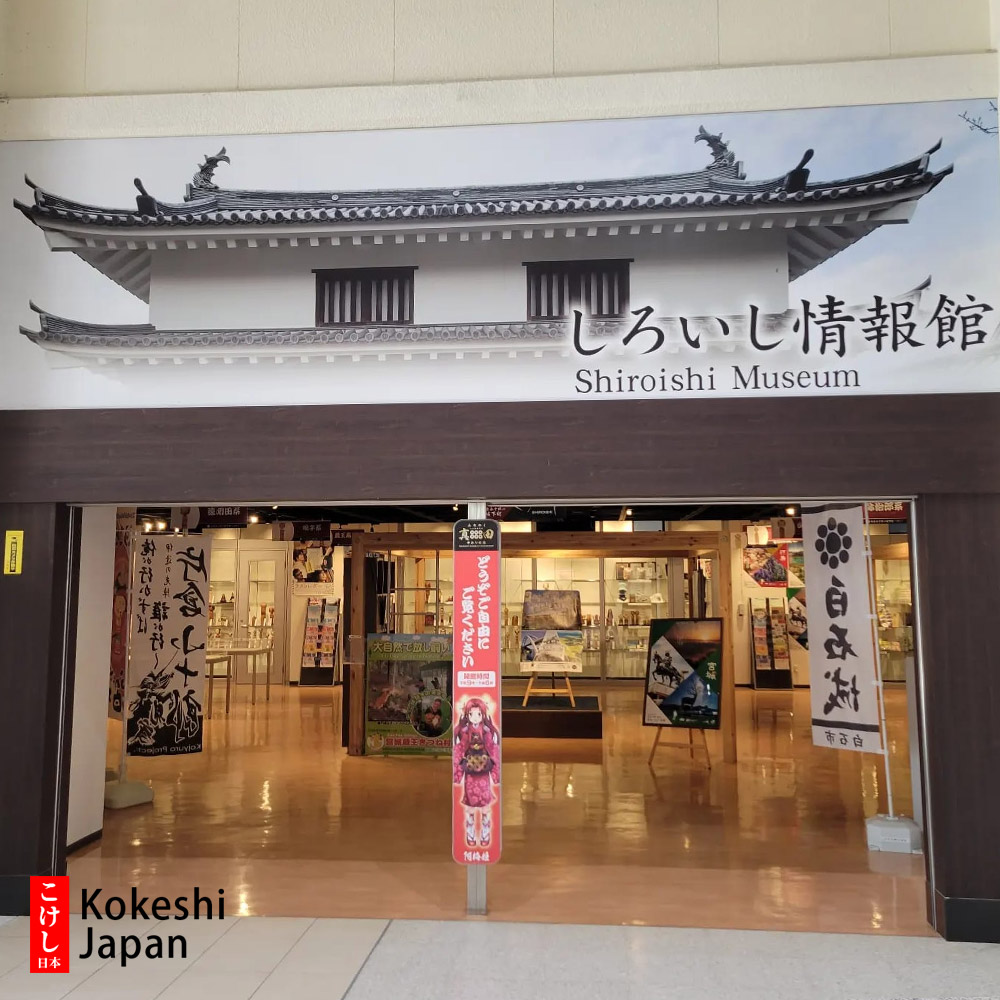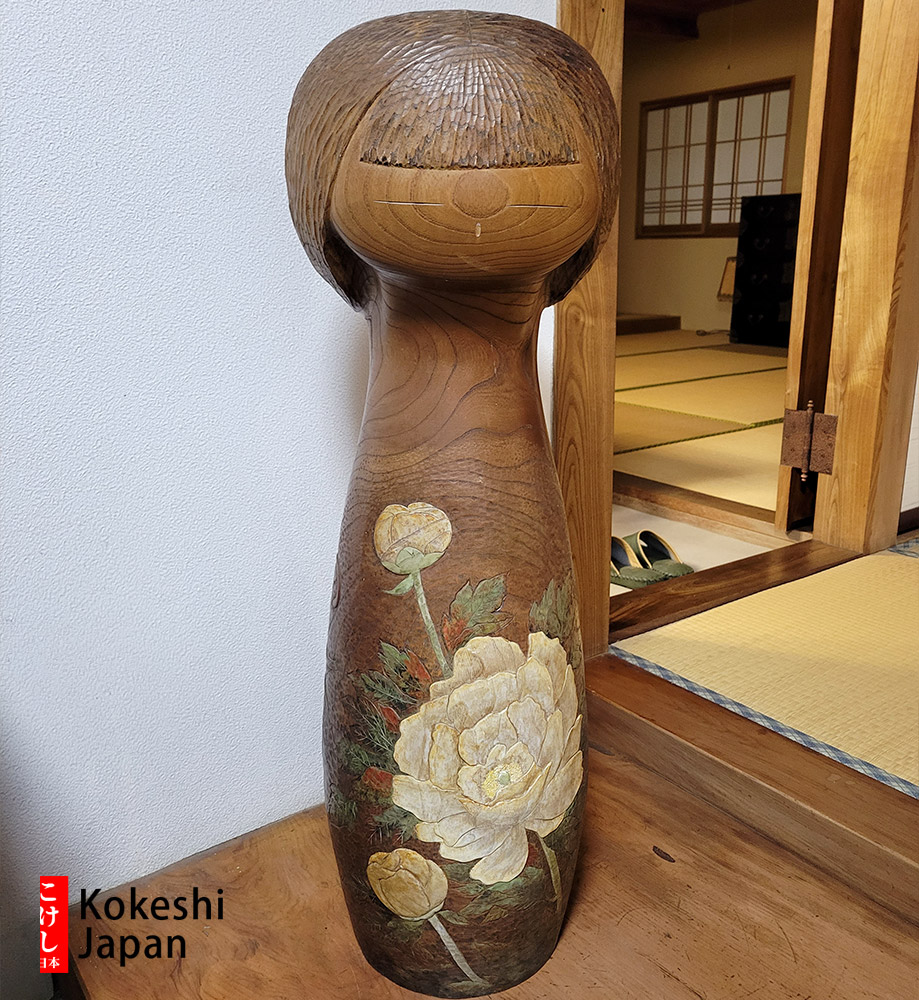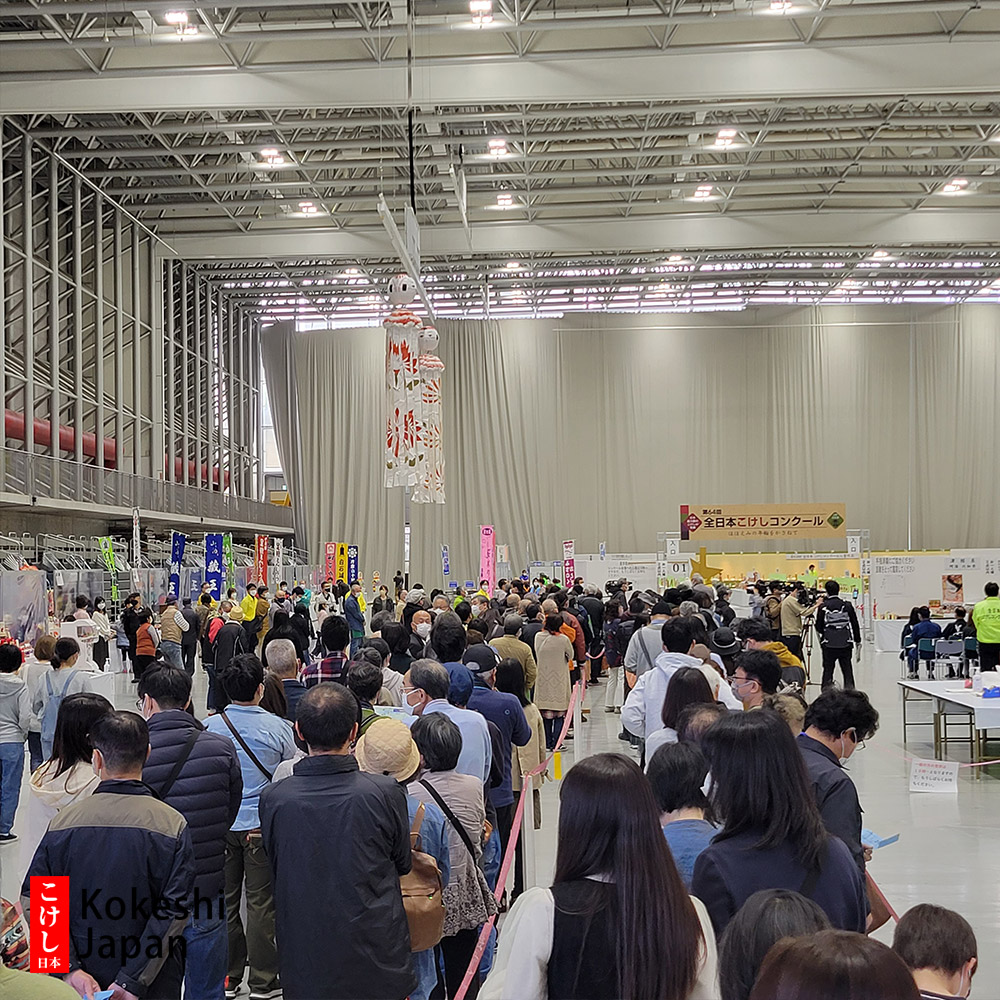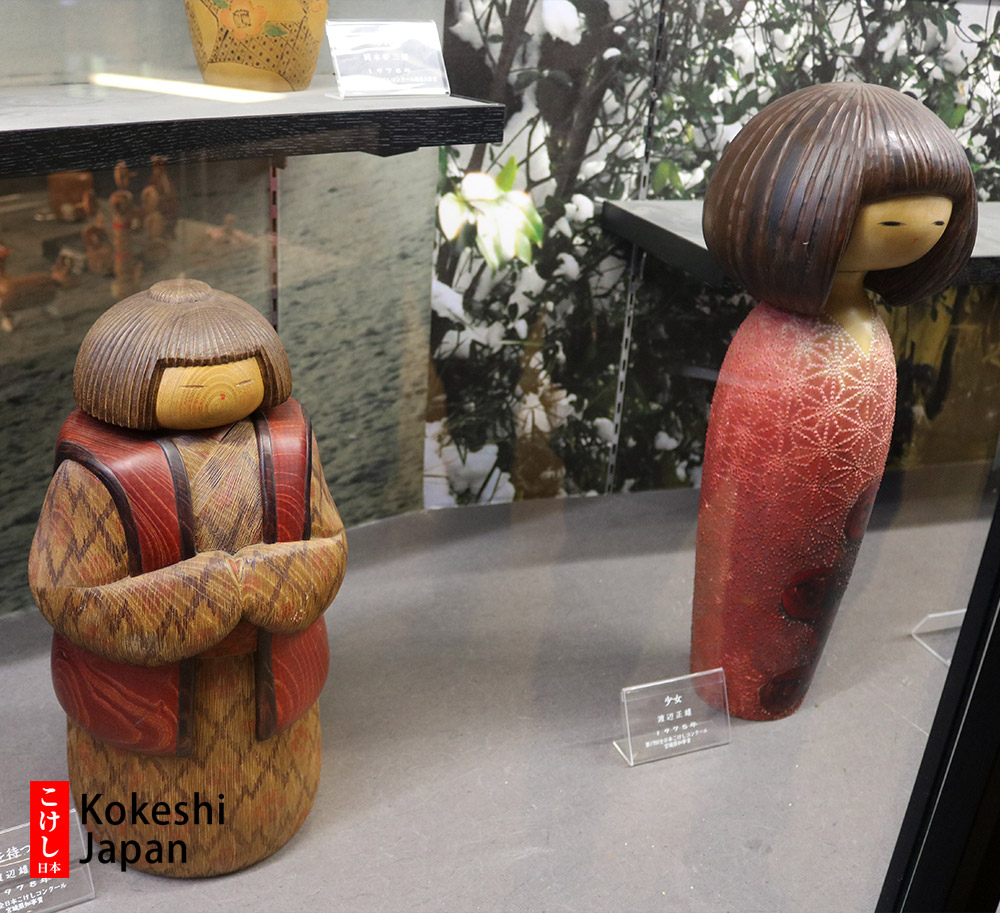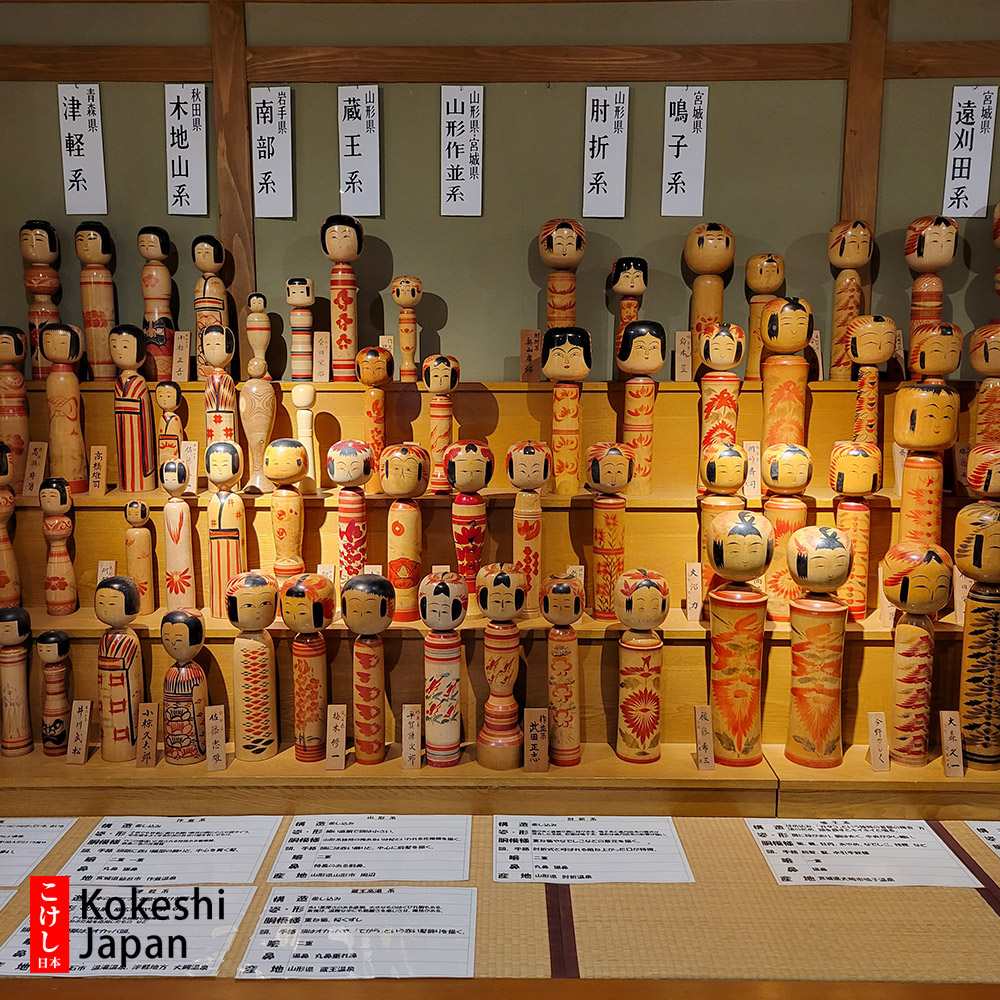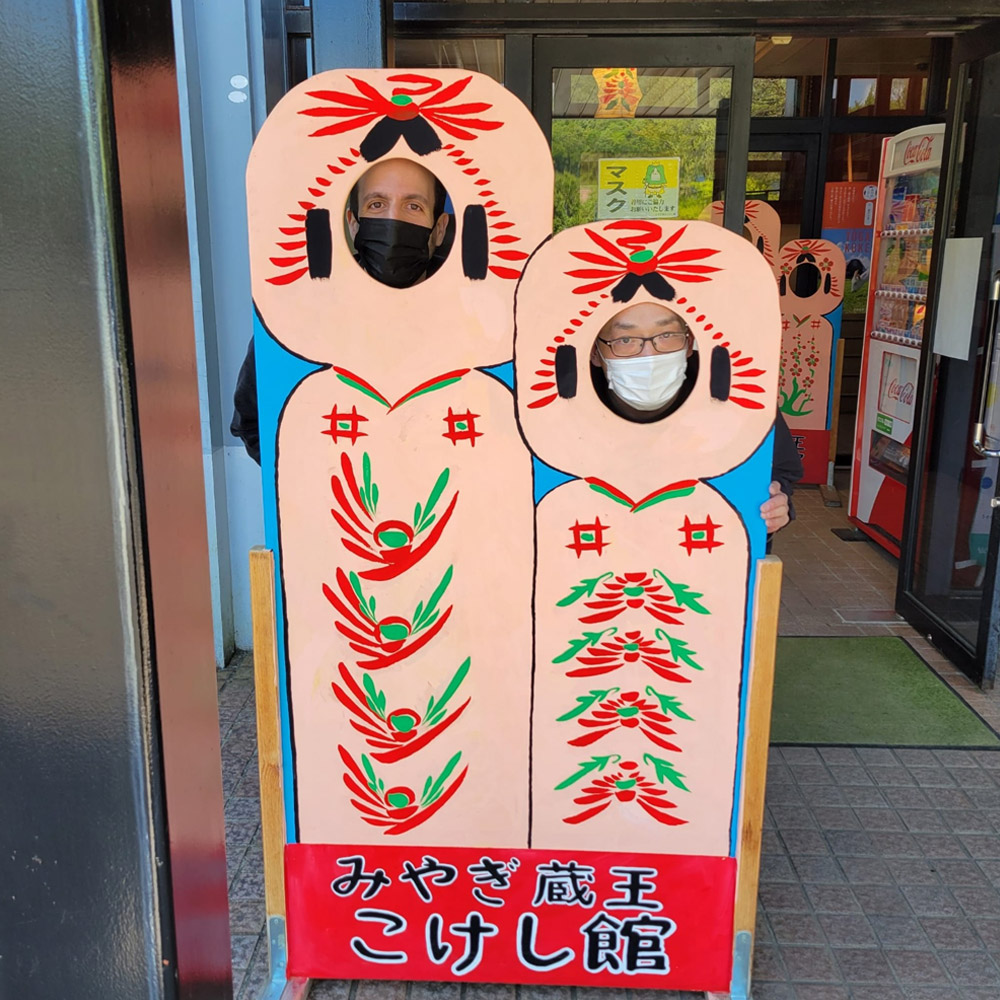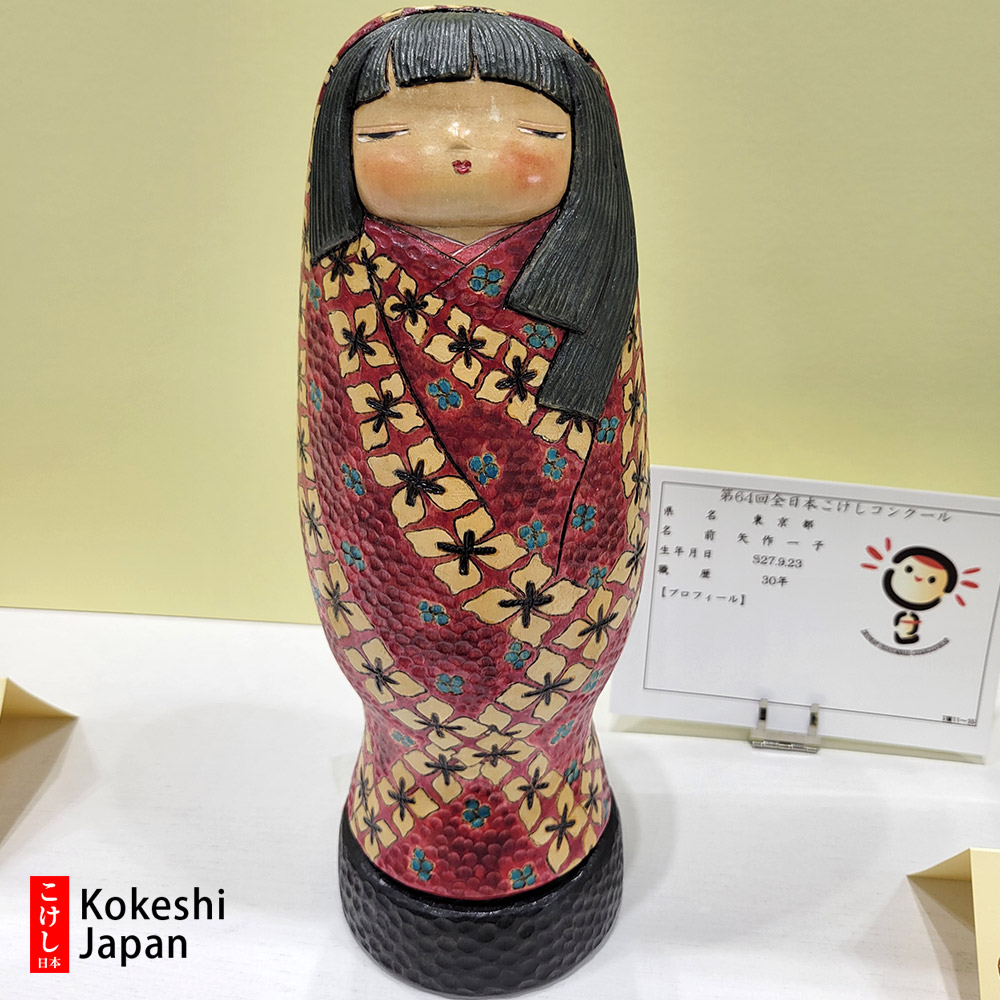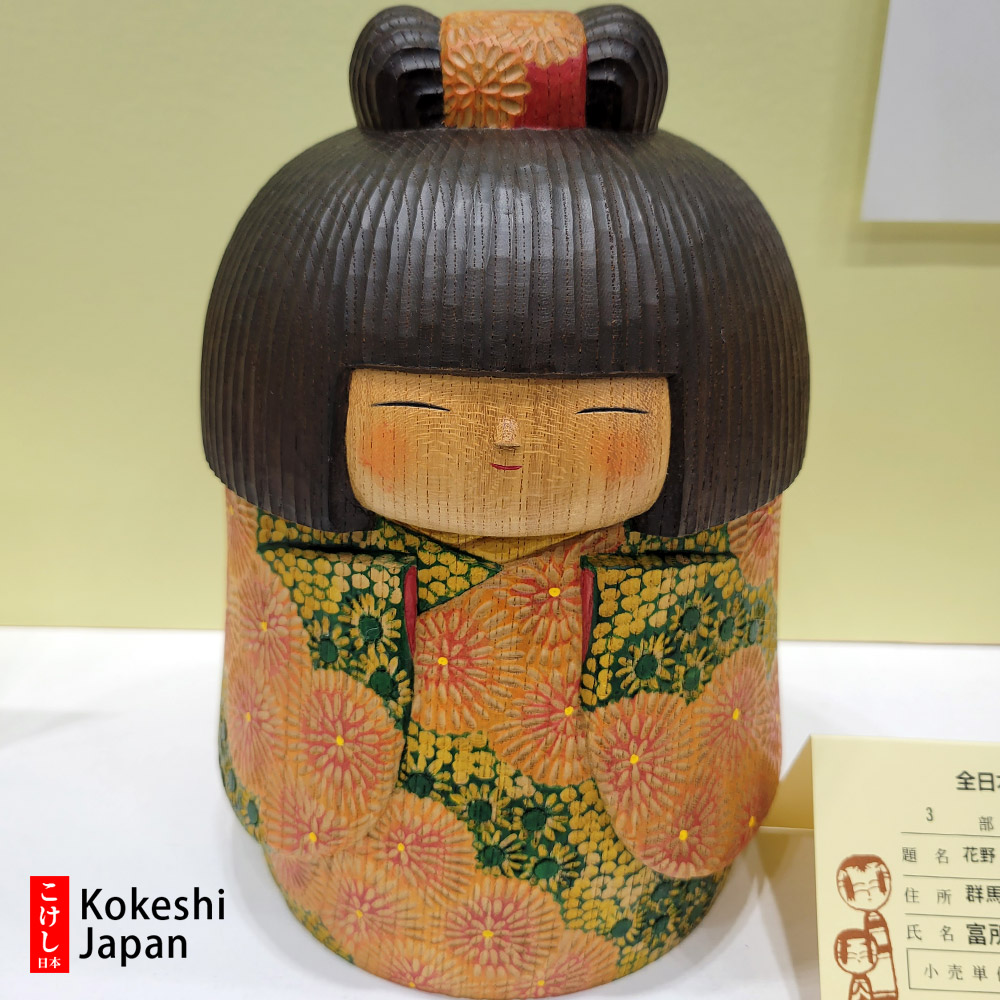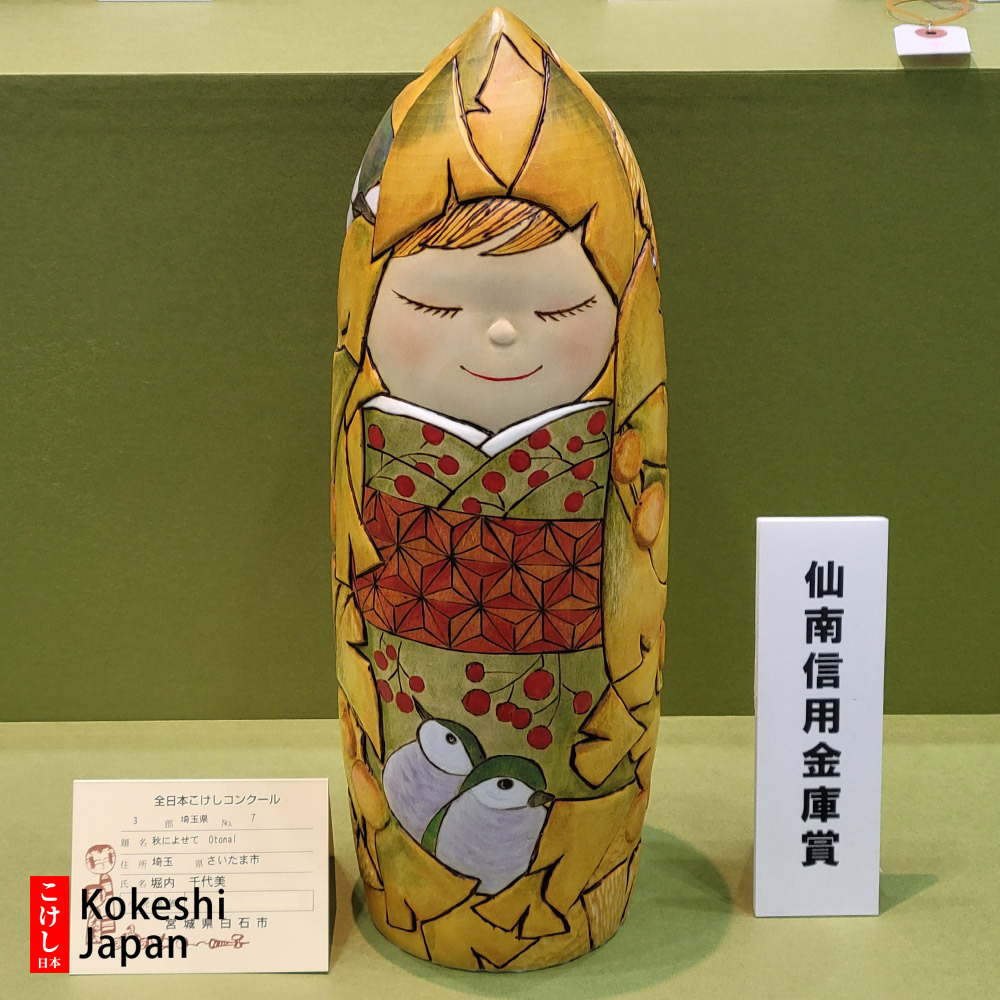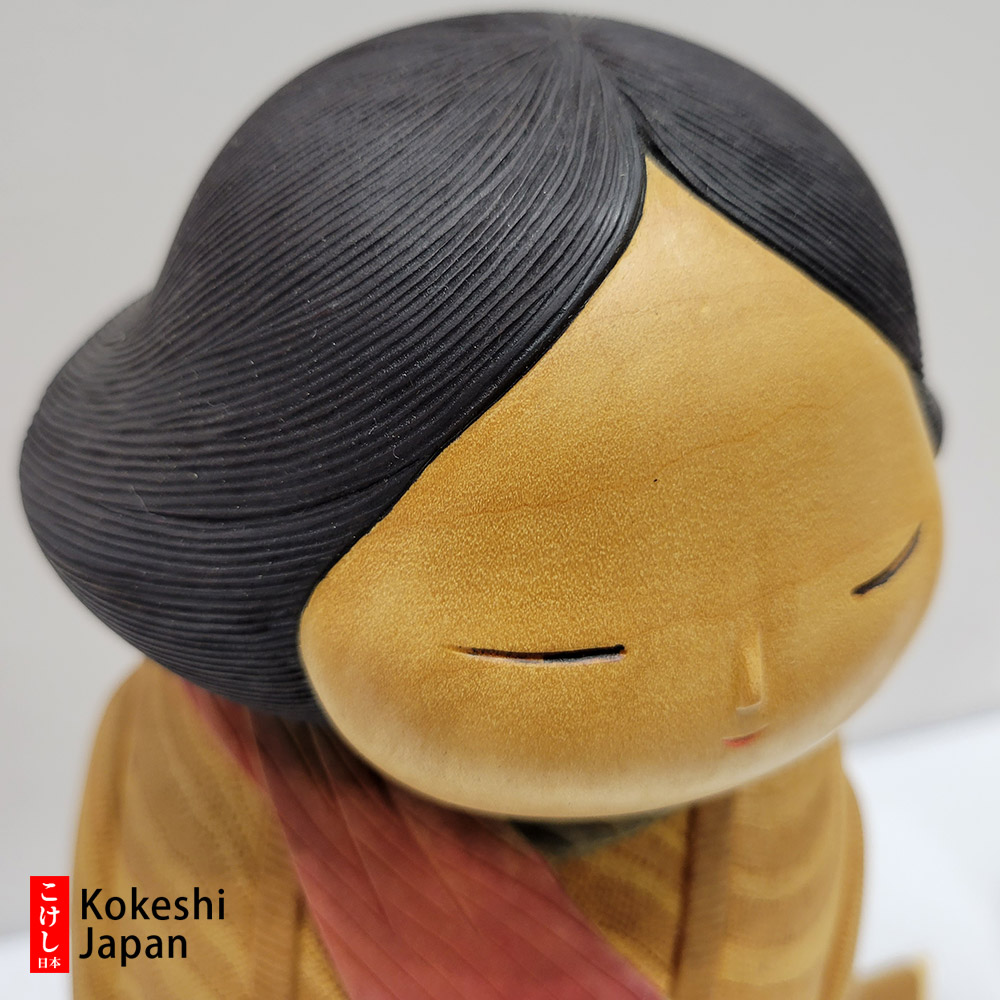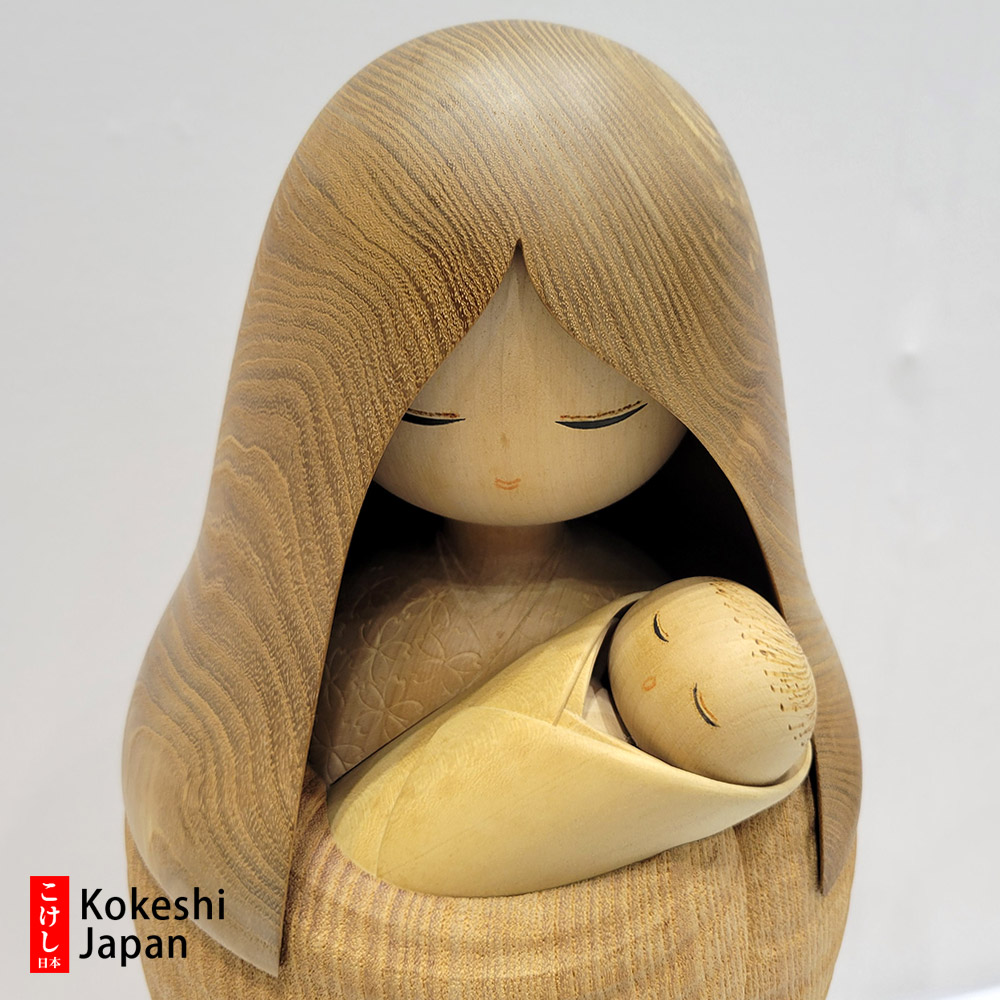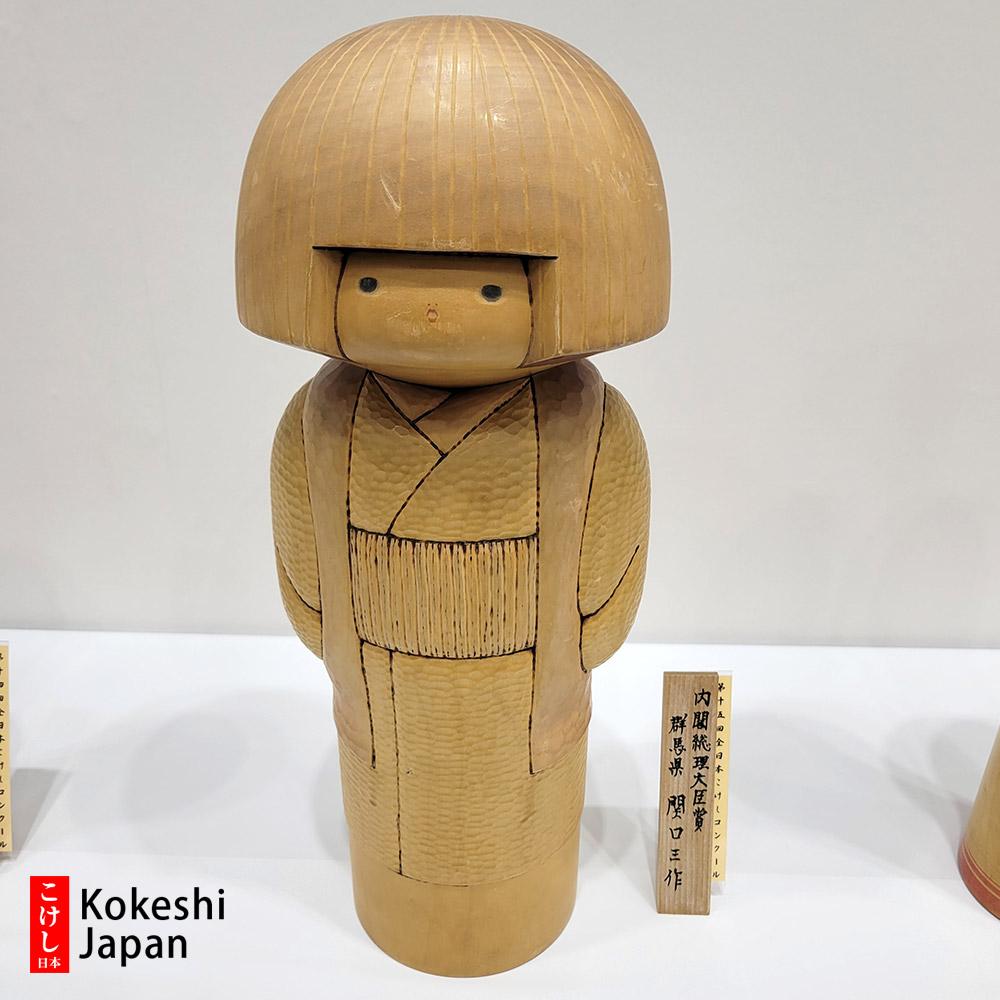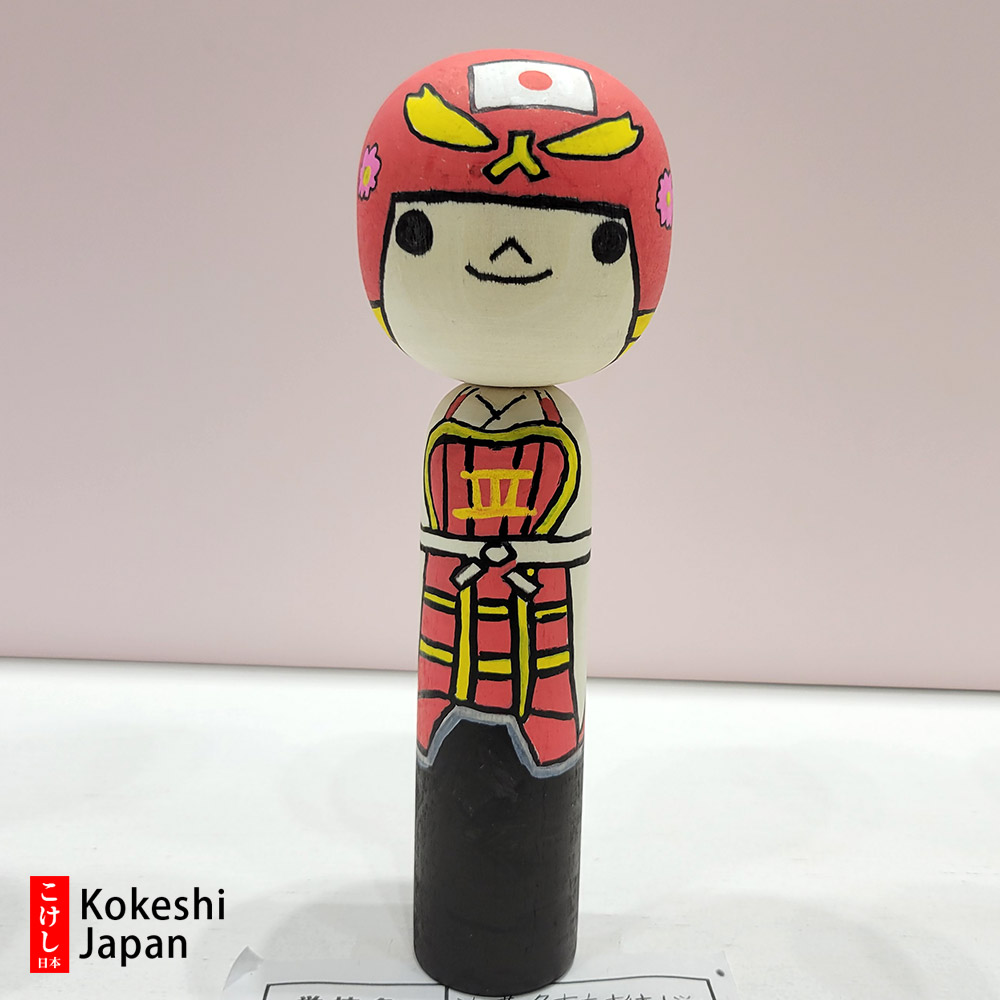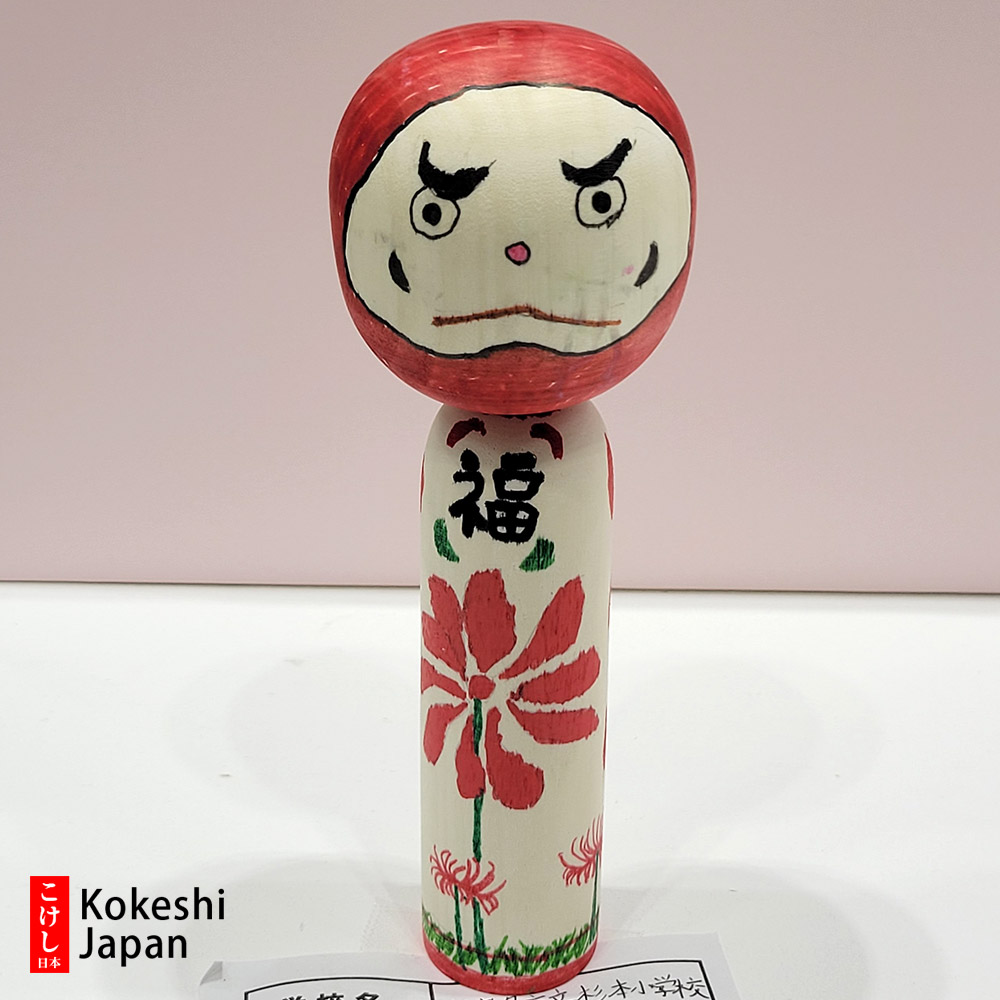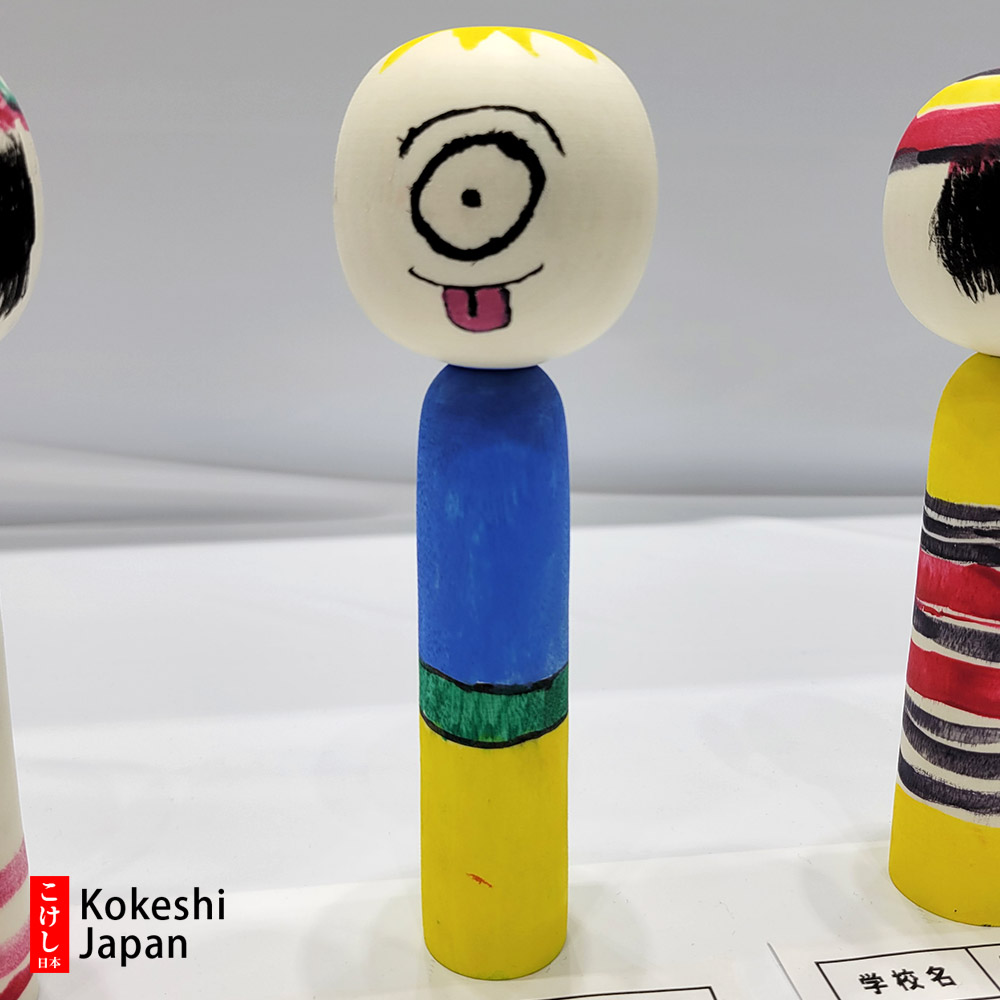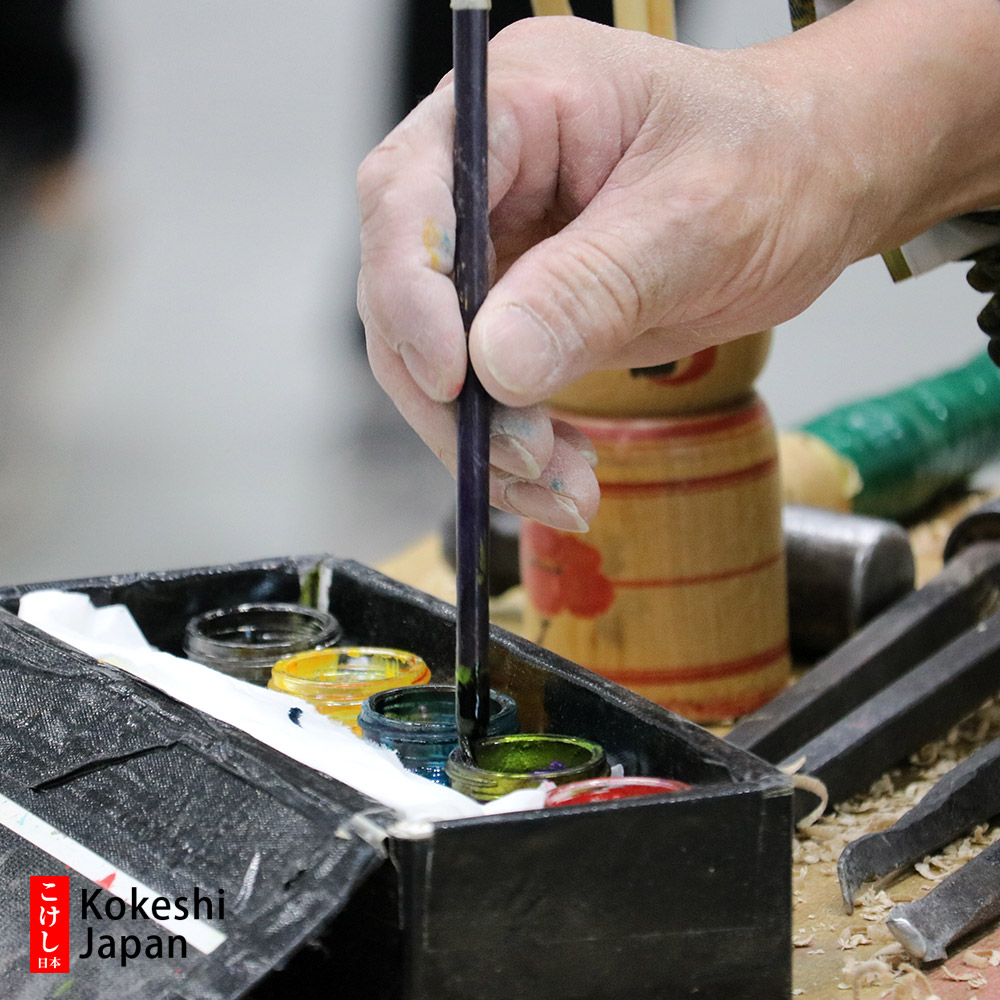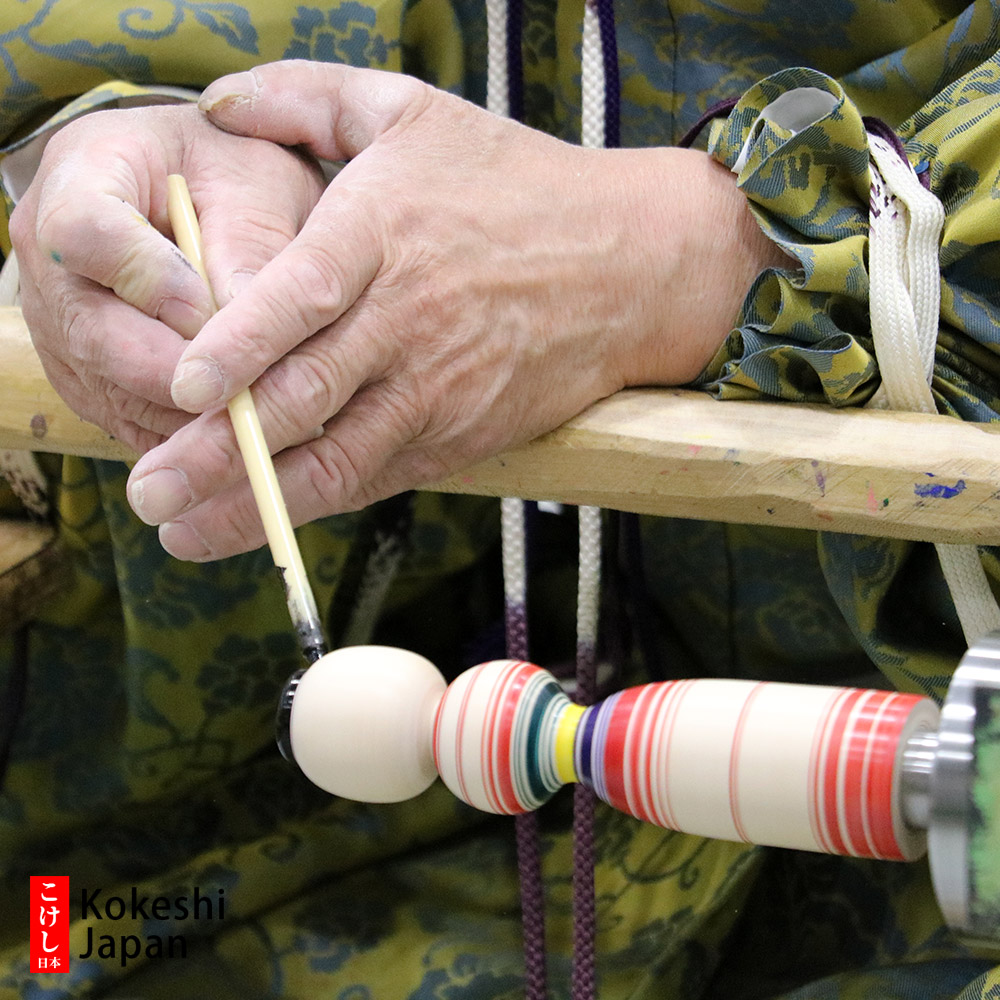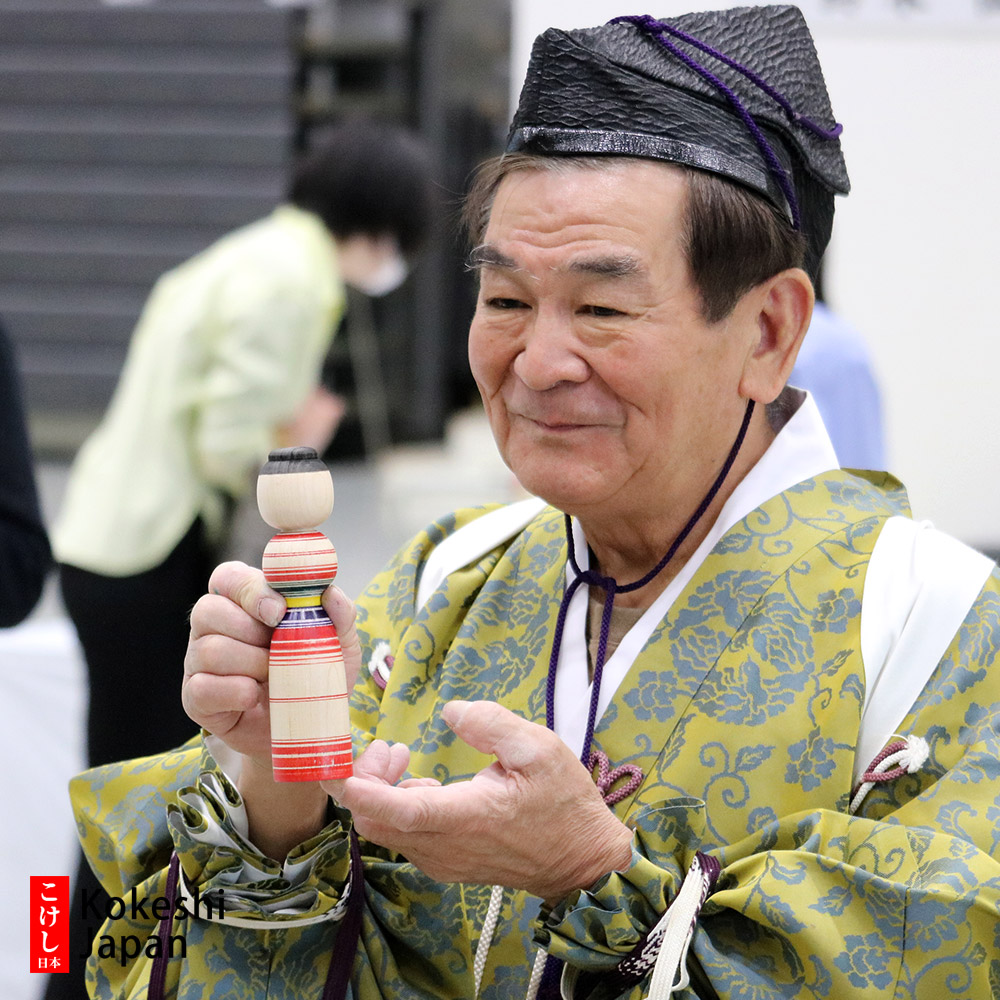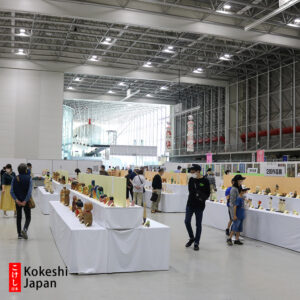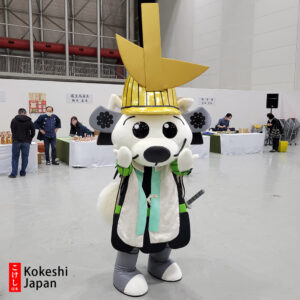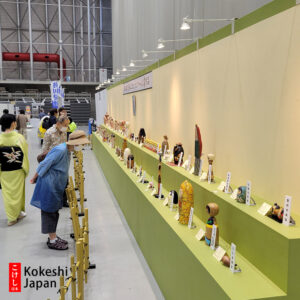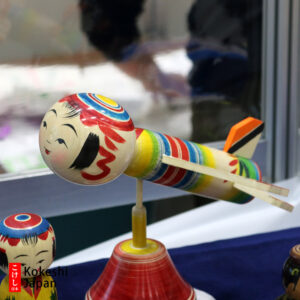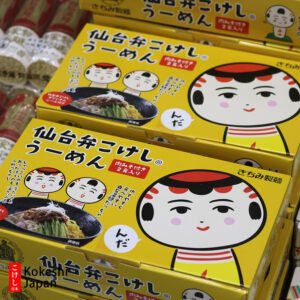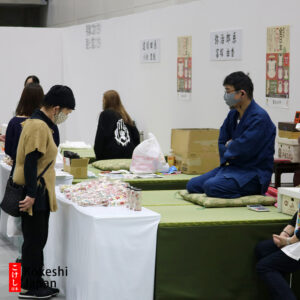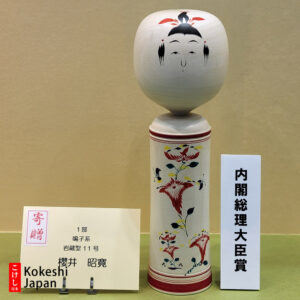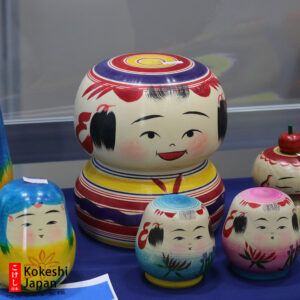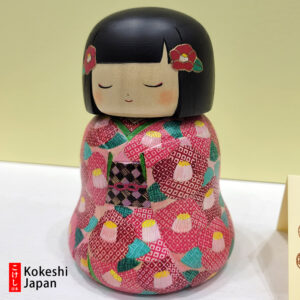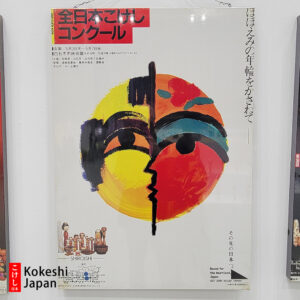The 64th ALl Japan kokeshi contest
July 15th 2022, Written by Taru
Back in early May the All Japan Kokeshi Contest was held again after a 2 year hiatus due to covid19. It took place in the beautiful “Cube” venue in the even more beautiful Shiroishi city in Miyagi prefecture.
About a month before the competition I chatted with a few traditional kokeshi collectors at Sato Yasuhiro’s exhibition in Yokohama city. To my surprise a couple of them said that they will be heading to Shiroishi at least 2 weeks before the contest starts. I thought that they were joking but little did I know…
The bullet train passed through Fukushima revealing a wonderful rural landscape with rice paddies reflecting the slightly cloudy skies and tall mountains in the background – an extremely refreshing sight unlike the busy and crowded streets of Tokyo.
As I got off the train in Shiroishi-Zao station and headed down from the train’s platform I was greeted by two human-sized traditional Yajiro kokeshi paper lanterns and shortly after passing them I saw Watanabe Yuji & Kunihiko san waiting for me on the other side of the station’s gates.
They suggested that our 1st stop would be the station’s gallery which is actually called “Shiroishi Museum” (しろいし情報館) and features kokeshi dolls that won awards in previous All Japan Kokeshi Contests as well as information about tourist attractions in the area. I was immediately attracted to the kokeshi dolls on display which turned out to be from the 57th-61st contests.
In case you didn’t know, the All Japan Kokeshi Contest features both traditional and creative kokeshi as well as wooden toys and other wooden items made using a lathe, thus the gallery displays many award winning works of different categories. Among them were many creative dolls by famous artists like Sekiguchi Sansaku, Kato Tatsuo, Okamoto Yuji, Fumio Tomidokoro and 4 (!) dolls by Kunihiko Watanabe.
Peeling myself off the gallery’s display glass wasn’t an easy task but after the long trip my stomach was begging for food. Luckily Yuji san suggested that we head off to have lunch in one of the Watanabe’s favorite local restaurants that serves Shiroishi’s famous “umen” noodles.
The restaurant was modestly decorated with a relaxing retro vibe and a couple of traditional kokeshi dolls set on the counter. It has just enough seats for 12-14 customers. Yuji san explained that in the past they used to make the noodles and sell them in packages, and only at a later stage added the restaurant section.
Following the Watanabe’s advise I ordered a dish called “Kenchin” which turned out to be one of the tastiest dishes I ever had in Japan. It’s filled with all kinds of yummy and nutritious vegetables (carrots, bamboo shoots, chunky mushrooms and more) in a flavorful light yuzu broth with hints of miso soup accompanied by umen – the famous local short noodles. Floating on top of this deliciousness was mochi (Japanese rice cake) which can be quite of a challenge to eat but definitely adds personality to the dish.
Our next stop was the Watanabe’s home where I met Miyoko Watanabe (Yuji’s wife and Kunihiko’s mother). She used to create kokeshi dolls too and she even gave me one of her own dolls as a present earlier this year.
The Watanabe house is a true kokeshi museum with stunning works by the late Masao Watanabe (1917-2007) including one absolutely gigantic kokeshi doll at the entrance and a few dolls that I’ve never seen before.
Day 2
The next day I woke up early to attend to contest itself thinking to myself that arriving about 45 minutes before it starts would suffice but turns out that by the time I got there the line already had about 200 people waiting! There were actually two lines, one for those who want to just view the dolls and another for those who wanted to purchase them though both seem to have stretched all the way into the horizon. After waiting for about 1 hour Kunihiko san came to the rescue and suggested we go explore the area and return later that day – a suggestion I gladly accepted.
After about 25 minutes of driving out of Shiroishi we reached Yajiro Kokeshi Village with its distinct rounded shaped museum building. The museum displayed traditional dolls of many different strains and artists as well as creative dolls by Kano Chiyomatsu, Kato Tatsuo and two dolls side by side, one by Masao Watanabe and one by Yuji Watanabe. Both works won the Miyagi Prefecture Governor Award.
Outside the museum there were also traditional kokeshi workshops however our timing wasn’t the best since the artists were having lunch together in one of the workshops. We didn’t want to disturb them so we greeted them and left after giving the workshop a quick look.
Our next stop was Zao Kokeshi Museum (蔵王こけし館) where we saw huge collections of traditional kokeshi dolls in all shapes and sizes in amazing displays.
Outside the museum they had a kokeshi photo cutout board which Kunihiko san suggested we use to take a picture. I think that Kunihiko san make’s for a better kokeshi than me but you can be the judge of that ^^
In the afternoon hours we went back to the beautiful Cube complex and it seemed like a completely different place comparing to the one we saw in the morning – the crowds were almost completely gone!
Having a few hours remaining before closing time I took the opportunity and photographed many of the beautiful works that were on display.
Some of the award winning works by Takashi Kojima, Horiuchi Chiyomi and Kunihiko Watanabe.
Besides the current award winners, dolls that have won the prime minister award in previous years were also displayed among them dolls by Ikari Fumiko, Makino Hitoshi and Sekiguchi Sansaku.
Another interesting section in the contest was dedicated to kids from several schools around the country who made their own unique designs, some showing really promising talent!
The 2nd day had a much more enjoyable and relaxed atmosphere comparing to the opening day. There was a traditional kokeshi making event with the famous Tsugaru kokeshi craftsman Abo Muchihide. First he showed the crowd how to sand the wood to make it smooth and then he continued to decorate the body with the traditional Tsugaru kokeshi colors.
Besides the main exhibition there were also many stands in which kokeshi artists sold their dolls, souvenir stands that offered local sake, wine, and even a few selling local produce such as bamboo roots!
If you’re a fan of both traditional and creative kokeshi dolls then I wholeheartedly recommend you to plan your trip around this joyful event. It’s a real kokeshi celebration and you can also easily acccess the neighbouring Zao and Yajiro villages and meet artists in person.
Thank you for reading this far. If you enjoyed this article please use the links below to share it with your friends, family and fellow collectors and help spread kokeshi dolls happiness.

